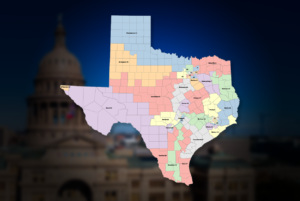The city I call home has emerged near the top of an astonishing list of communities.
Princeton, Texas, is among the fastest-growing cities in all of America that have populations greater than 20,000 residents.
The Census Bureau released the figures recently. Princeton logged a population of 17,027 after the 2020 Census was taken, which nearly triple the size of the city in 2010. In 2023, though, the city grew by another 11,000 residents, pegging its population at an estimated 28,017.
Collin County’s growth has been equally staggering, standing at more than 1.2 million residents, according to Census Bureau estimates.
I look around my neighborhood and notice more lots being developed, with housing units being framed and utility lines being connected. I cannot estimate how many I see in my ‘hood; I’ll just suggest that there are possibly hundreds more units under construction.
Which brings me to my point. Mayor Brianna Chacon is tossing the idea around about enacting a single-family and apartment construction moratorium. I don’t know the particulars of what Chacon envisions, but I want to endorse — in principle — what she might want to do.
I have thought a little bit about the courage it has taken for Chacon to pitch this idea. She is a Realtor when she isn’t helping shape municipal policy, which suggests to me she is willing to take an income reduction if it results in a new public policy.
Chacon’s reason for favoring a stoppage in this construction is clearly defined: We don’t have the infrastructure to handle the flood of new residents. Our streets need repair; we have water needs that need improvement; we will need more first responders on the job.
Chacon said a while ago that Princeton has grown too rapidly, that it needs to play catch-up with the infrastructure it must provide the new residents who are coming here.
I cannot disagree with that. Oh, we also have that mammoth apartment complex on US 380 that has been stalled. It is partially built and only God knows when work will resume on it. My suggestion would be for the city to pull the plug on that boondoggle, knock it down and turn the site into more green space. But that’s just me.
I like living in a city that is attractive for others who want to live here. However, enough is enough … or so it seems, as Princeton continues to lead the way in urban growth.

